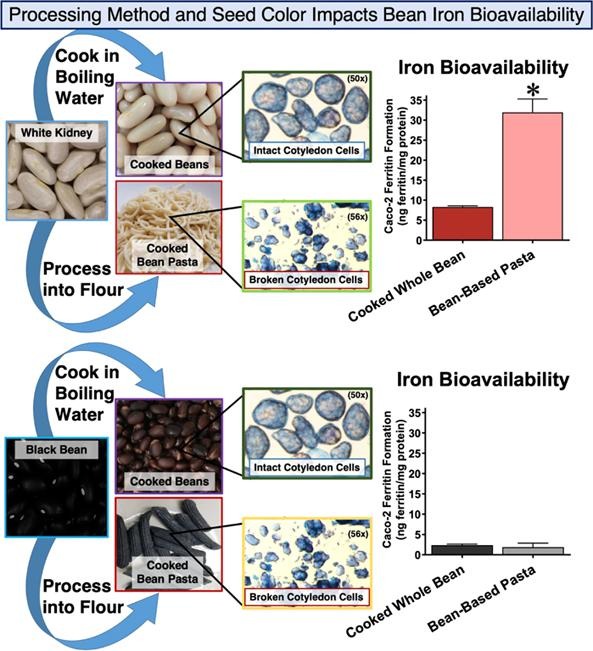Processing White or Yellow Dry Beans (Phaseolus vulgaris L.) into a Heat Treated Flour Enhances the Iron Bioavailability of Bean-Based Pastas
USDA-ARS, Cornell University, Michigan State University
Abstract

Processing techniques can disrupt the cotyledon cell walls of raw beans, allowing digestive enzymes greater access to intercellular stores of micronutrients such as iron during digestion. This study evaluated the iron bioavailability of seven bean varieties with different seed coat colors (white, yellow, cranberry, red, black) either boiled or processed into spaghetti pastas formulated from heat treated bean flour as the major ingredient (90% bean flour). Iron bioavailability was significantly (p ≤ 0.05) higher in spaghetti made from white or yellow bean varieties Snowdon, Alpena, Samurai and Canario when compared to boiled beans. Although cotyledon cells were broken and the phytate to iron molar ratios were significantly lower, the iron bioavailability of the cranberry (Etna), red kidney (Red Hawk) and black (Zenith) bean varieties did not improve after processing into spaghetti. Iron bioavailability of bean-based pastas was associated with procyanidin and cinnamtannin compounds that have a negative impact on the absorption of iron.
Analysis was performed by LC/MS using the Advion Interchim Scientific expression® Compact Mass Spectrometer (CMS).
